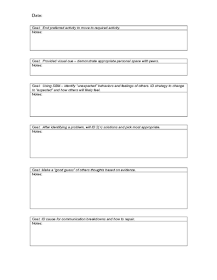For this week, I pulled in an activity that I have done for several years now. I was introduced to this book and craft (origin uknown) during my days working on a district speech therapy program that focused on intervention for 3-5 year old students specifically with articulation and expressive language impairments. That program has since fallen victim to "budget cuts", but the ideas and activities live on and I try to find ways to add to them or expand them for my slightly older students each year! The book used for this activity is "It Looked Like Spilt Milk" by Charles G. Shaw. Here it is:
It's a pretty popular book if you haven't already seen it. Check in your school library or with your fellow teachers or SLPs and I'm sure you'll get your hands on it quick! In this story each page has a white "figure" of various objects such as an ice cream cone, a birthday cake, a rabbit, etc. Also, it is filled with repetitive text by including the same phrases on each page. At the end of the story, you learn that each of these figures is actually a "cloud" in the sky.
Some perfect articulation targets for this book are: word-initial L and word-final K because you'll see the phrase "Sometimes It Looked Like. . ." on each page. Some Language targets that I used with this book this week were: temporal phrases ("sometimes"), regular past tense ("looked"), describing (have the students describe details as to "how" they could tell each figure was a particular object).
With almost all of my students I can read the first page or two and they can "read" the rest because it is repetitive, and this offers many opportunities to practice these articulation and language targets. For kids who might not do that, hearing it first is a great way to bombard the auditory system with these sound targets.
I really like to choose activities and stories that I can continue for at least 2 sessions. So, with this activity, on the first day, we read the story, described each figure and discussed the children's experiences with seeing "pictures" in the clouds. Then we made our own "cloud" paintings. Here is how a few of them came out, what do you think you see?
The way we did it was, I took a half sheet of blue construction paper (light or dark would work), and I folded it to give it a crease and a "target" for the child. I gave each of them a paintbrush and white paint and gave them instructions (and modeled) on how to paint their picture by "dabbing" paint in any way they wanted near the center of the paper. <By the way, this helped me add in other language targets regarding "position" and "following directions". I even had my students who need to work on comprehending instructions repeat the instructions back to the entire group>. Then they were instructed to paint for a few seconds (about 10) until I said to stop. Finally, I had them fold the paper over and "spread" the paint. When they opened it up, it really changed their picture and they were very creative in describing what they saw in their "clouds". It's a pretty quick project, so each student was able to make three clouds. That took our entire session and this gave our paintings time to dry until the next session.
In our next session (or maybe even 2 more sessions depending on time allowed), we had more fun with this story and activity. Of course, we started with recall/retell (another language target), and then I took the students outside on a "cloud walk" and we walked around the school observing and describing clouds. It was a GREAT way to work on generalizing these targets in conversation and outside of the therapy room, and it was nice to get some fresh air! After that (either the same day or the next), we came back to our cloud paintings and assembled our own "book". I gave each student a "cover" using a blank piece of the same colored construction paper. For the younger students, we came up with a title together and I typed it and printed it out so they could glue it to their cover. They were also given the opportunity to illustrate their cover with crayons. Then we added our own words to the book. For my younger students, I wrote the words in their books or typed it up so they could glue it in. For my older students, they wrote their own or dictated to me so they could copy their sentences from my board. They all had a great time during this activity and they each have their own "published book" that they can take home and read to their parents.
This week I took pictures of their books. Here they are!
I also assigned them homework to take their families on a "Cloud Walk."
I hope you enjoy this SIMPLE SPEECH activity with your students!
~Orlanda


























